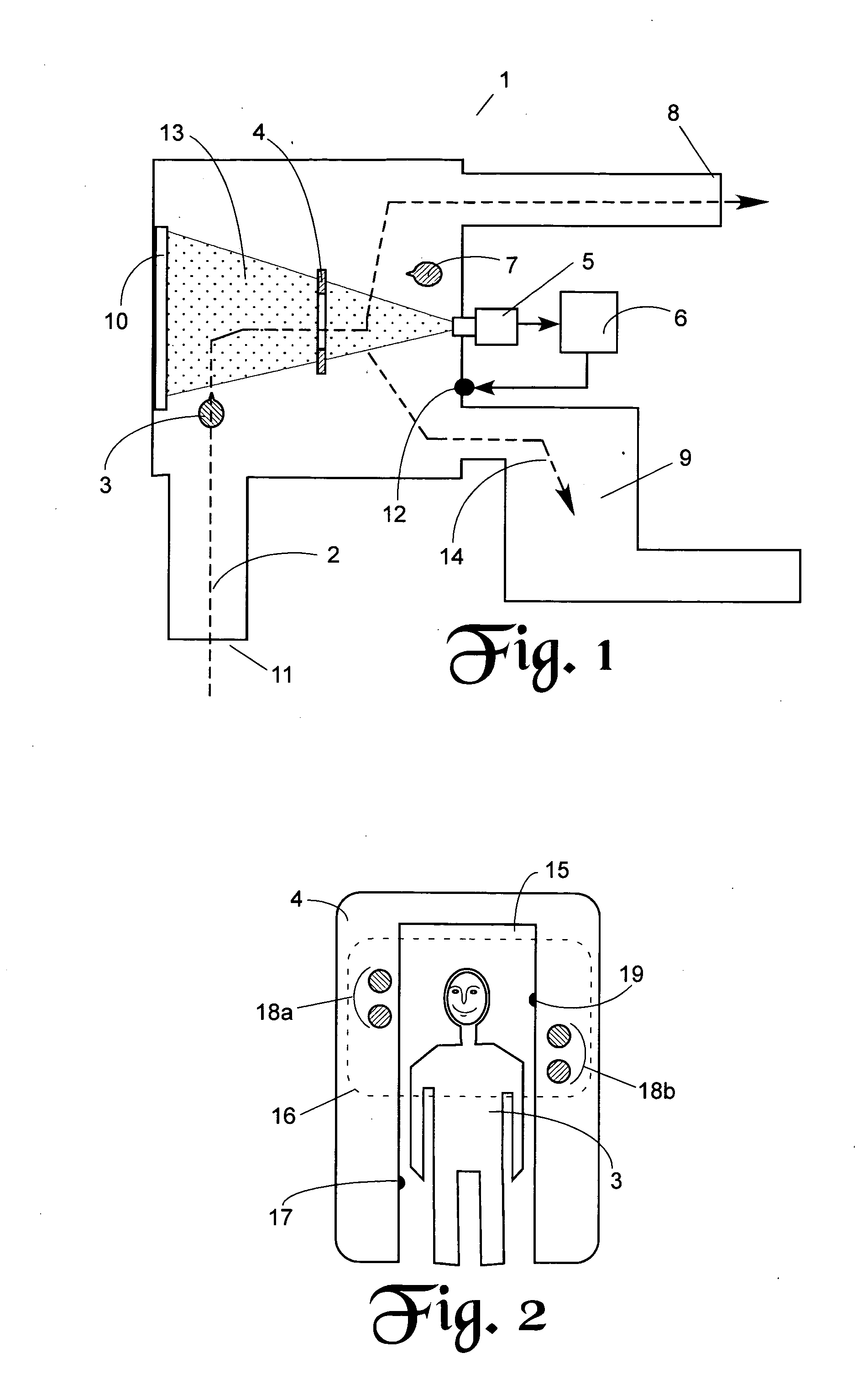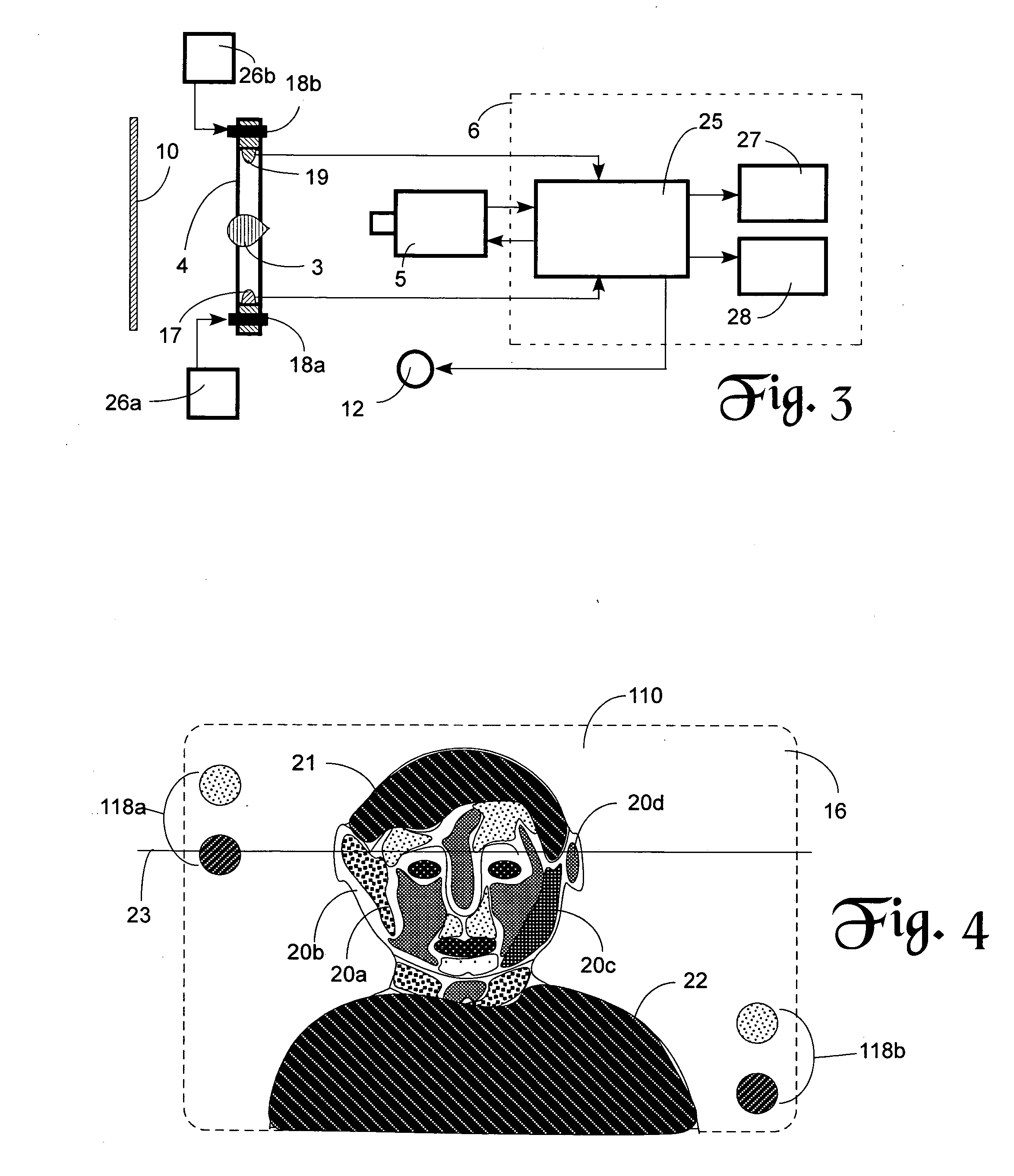Noncontact fever screening system
- Summary
- Abstract
- Description
- Claims
- Application Information
AI Technical Summary
Problems solved by technology
Method used
Image
Examples
Embodiment Construction
[0024]A typical arrangement of the fever screening at a port of entry may be as follows. In an airport, e.g., the test area is situated in a close proximity to an arrival gate. Before exiting from the airport, every passenger and crew member first must pass through the fever screening area 1 whose general layout plan is depicted in FIG. 1. The walking path 2 of a subject 3 leads from the entrance 11 through the target gate 4 and then to the exit 8. The target gate 4 is the place where a fever detection takes place. The detection is performed by the thermal imaging camera 5 and signal processing equipment 6. The equipment 6 is connected to an indicator, for example, an alarm 12 which is activated when fever is detected. The screening operator 7 supervises the procedure and directs the subject 3 either to exit 8 or to the secondary screening section 9 where the selected subjects who triggered the alarm 12, undergo the secondary testing with a conventional clinical thermometer. If feve...
PUM
 Login to View More
Login to View More Abstract
Description
Claims
Application Information
 Login to View More
Login to View More - R&D
- Intellectual Property
- Life Sciences
- Materials
- Tech Scout
- Unparalleled Data Quality
- Higher Quality Content
- 60% Fewer Hallucinations
Browse by: Latest US Patents, China's latest patents, Technical Efficacy Thesaurus, Application Domain, Technology Topic, Popular Technical Reports.
© 2025 PatSnap. All rights reserved.Legal|Privacy policy|Modern Slavery Act Transparency Statement|Sitemap|About US| Contact US: help@patsnap.com



